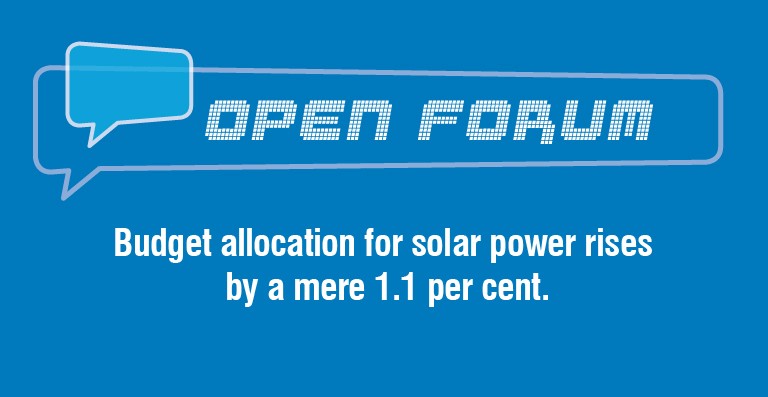Budget allocation for solar power rises by a mere 1.1 per cent.
By EPR Magazine Editorial August 5, 2019 12:16 pm IST
By EPR Magazine Editorial August 5, 2019 12:16 pm IST


In the wake of targets set to achieve 175GW of solar power capacity by 2022, it is imperative that the government supports the solar industry with favourable policies and budgetary allotments. With the reduction in safeguard duty proposed, as a precursor to an eventual abolishment of the duty altogether, local manufacturers are facing significant adversities in terms of demand in the domestic market. This, coupled with the recent change in India’s trade status with US, has led to the loss of the cost advantage that Indian manufacturers enjoyed in the US market. Even the much-awaited anti-dumping duty on EVA sheets and other solar products has not been implemented, and not much movement has been witnessed on the matter either.
Sunil Rathi, Director, Waaree Energies

The Indian Government had initially set a target of 20GW capacity for 2022, which was achieved four years ahead of schedule. The target was revised to 100GW on successfully achieving the earlier target. With the new milestone achieved, in reference to the figures obtained from Mercom’s India Solar Project Tracker, 30 per cent of the solar installation goal of 100GW by 2022 set by the government has been achieved. This means 70 GW of solar needs to be installed in the next 3 years which is a tall task indeed. With an unexpected increased growth in solar power and high targets for the next 3 years, the skimpy 1.1 per cent increase in budget for solar power is neither fair practically nor technically.
Sidhharth Gangal, CEO, The SolarLabs
The union budget 2019 holds promise for the domestic solar industry. While we can say that the increase is only 1.1 per cent, the increase in the budgetary allocation for the solar power itself signifies government’s focus on the sector. The local manufactures are encouraged to see the government’s initiative of attracting global manufacturers to invest in India but at the same time we need to look at the local manufacturing to sustain and grow. We need policy shift in terms of duties on imported components and more flexibility for import of raw materials. The industry is awaiting the announcement of the full package of benefits for the power sector in general, and for solar sector specifically.
Shashi Shekhar, Managing Director, Camfil Clean Air Solutions
The solar industry looks stumped to see a significant contrast between the 57 per cent rise promised by the government in the revised budget of the year 2018-19. The budget currently allocated is divided into two parts with the maximum budget ( 2,479 crores) to be spent on installing an additional capacity of 7,500MW projects and the remaining amount ( 525 crores) is spent on the off-grid and decentralised solar sector. The current budget allocation would surely halt India’s mission of obtaining 100GW of solar capacity. With many investors pulling out their investment last year, the solar industry was looking forward to the union budget to provide some push to the projects stuck in the development stage.
Amit Bajpayee, Solar Energy Adviser, Agni Solar Systems Pvt Ltd
We use cookies to personalize your experience. By continuing to visit this website you agree to our Terms & Conditions, Privacy Policy and Cookie Policy.